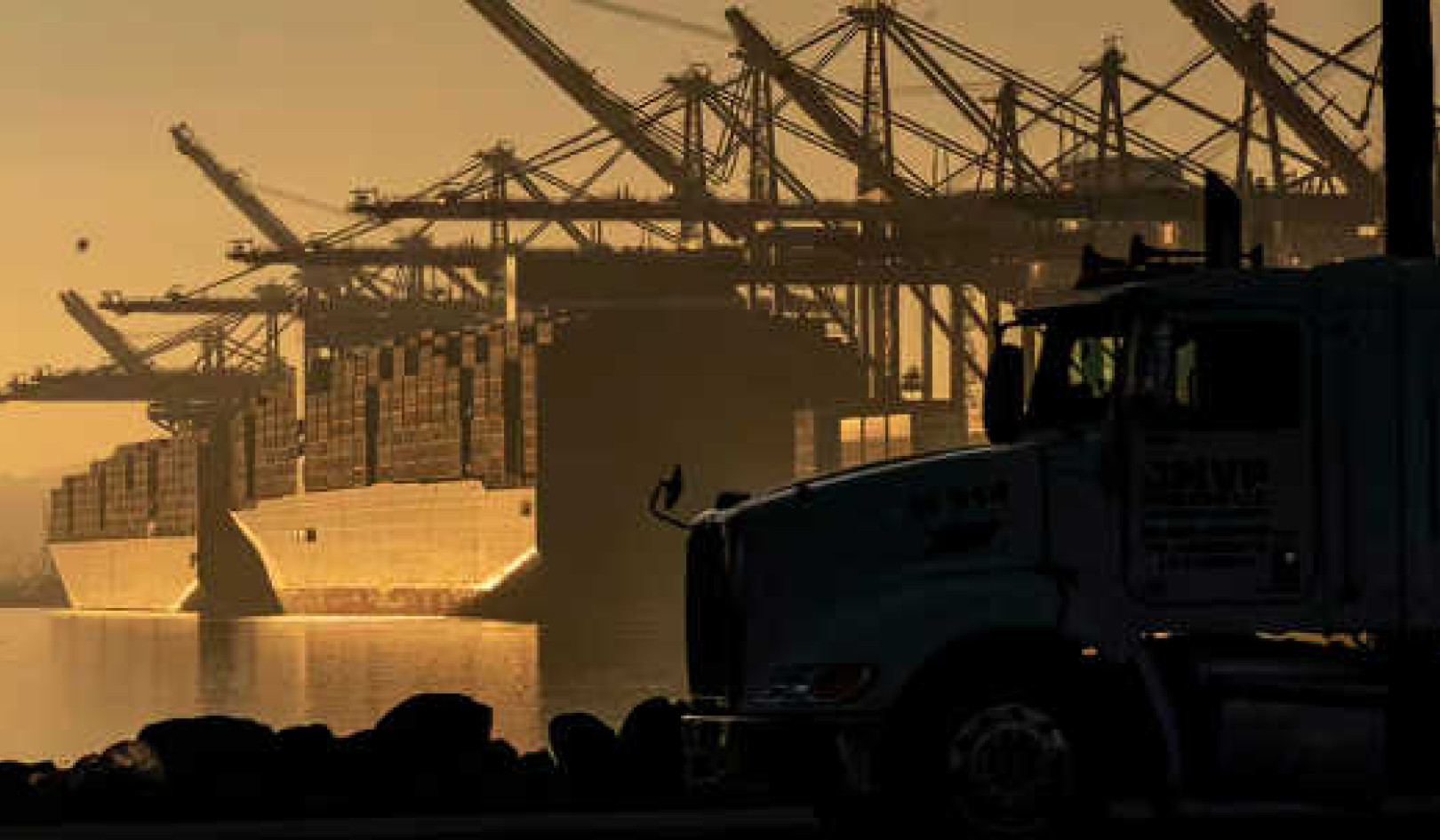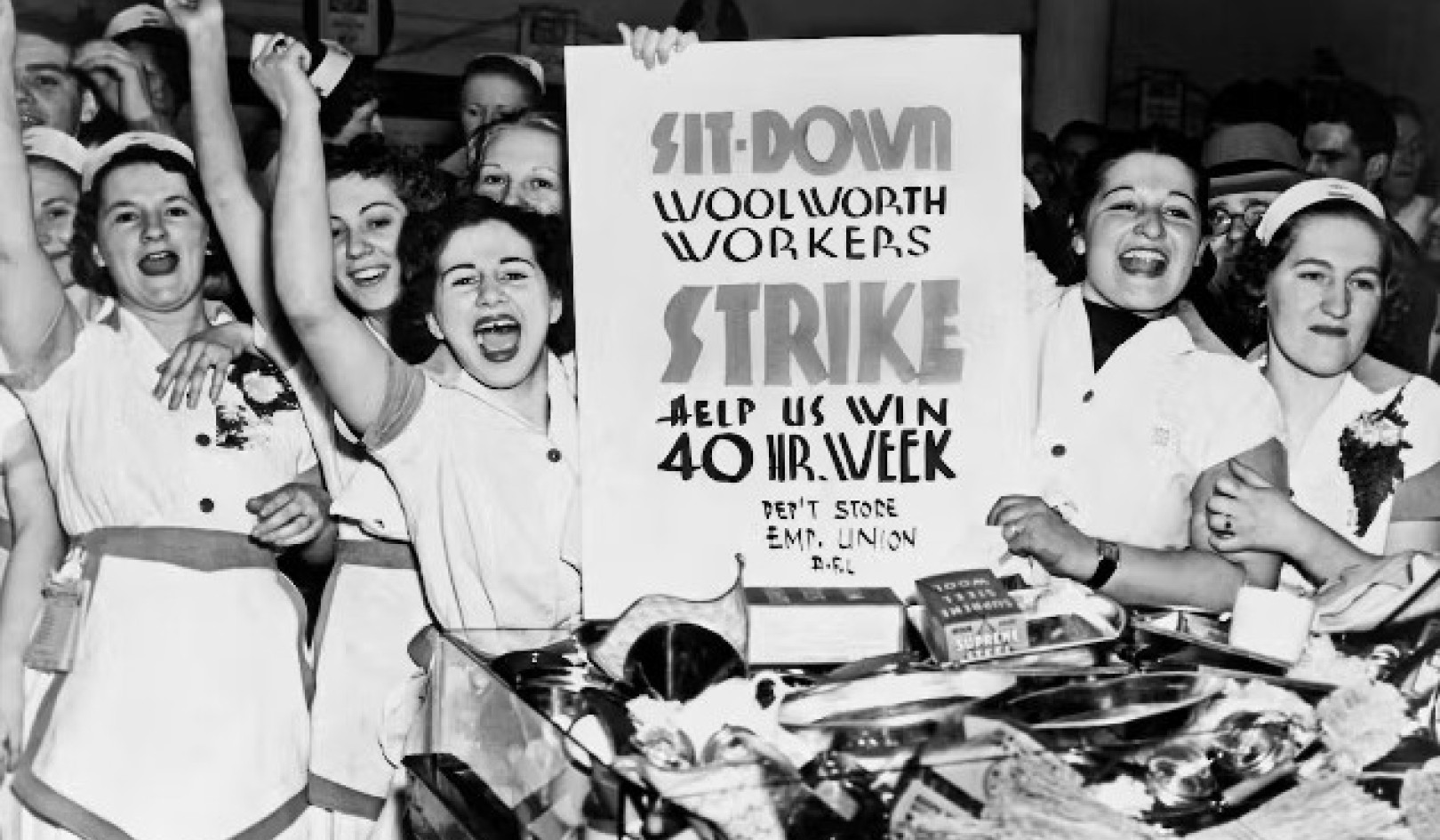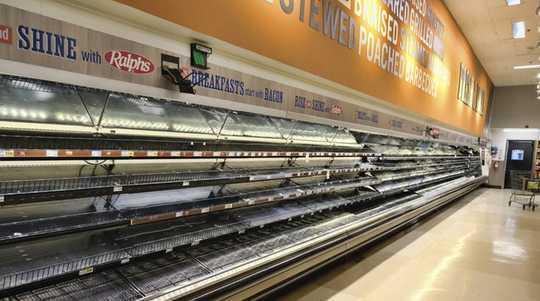
An entire section of meat and poultry is left empty after panicked shoppers swept through in fear of the coronavirus at a grocery store in Burbank, Calif. on March 14, 2020. (AP Photo/Richard Vogel)
Toilet paper shortages, profiteering from hand sanitizer and empty shelves in grocery stores.
Thanks to COVID-19, governments in most industrialized nations are preparing for shortages of life’s necessities. If they fail, riots over food may be inevitable. Some wonder if we are responding appropriately to COVID-19, and it’s clear that recent events expose a fundamental flaw in the global systems that bring us our daily bread.
We live in a wondrous age when global supply chains seamlessly link farmers and consumers using the principles of “just enough, just in time.” For years, companies have worked hard to keep inventories low, timing shipments to balance supply and demand using knife-edge accuracy.
In many ways, this system is a miracle. Low-cost food is one outcome. And if there’s a problem in one part of the supply chain, the global system is good at finding alternatives. (Mangoes from Asia gone bad? Try the mangoes from Central America!)
But with this abundance — and convenience — comes a hidden cost that COVID-19 has exposed: a loss of resilience. Our global food system depends on the tendrils of international trade to wrap the world in an ever more complex system of buyers, sellers, processors and retailers, all of whom are motivated to keep costs low and operations lean.
Building resilience
So when the supply chain system itself is thrown into question — as it is now thanks to COVID-19 — then the wheels threaten to come off the proverbial apple cart. COVID-19 shows that we need to wake up and realize that if we really want to be resilient, we need to build in more redundancies, buffers and firewalls into the systems we depend on for life.
In practical terms, this means we should be keeping larger inventories and promoting a greater degree of regional self-sufficiency.
These measures will help ensure that our communities don’t panic if the food trucks stop.
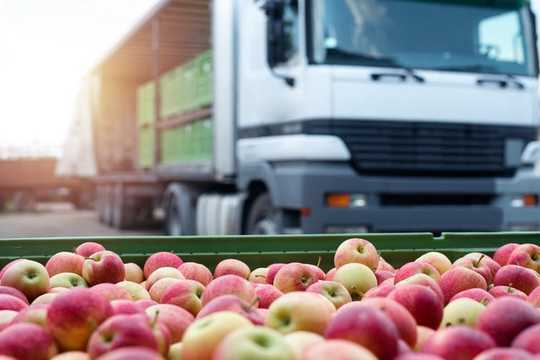 A truck is loaded with containers full of apples ready to be shipped to the market. (Shutterstock)
A truck is loaded with containers full of apples ready to be shipped to the market. (Shutterstock)
But while this may sound sensible, high inventories and more regional self-sufficiency are, in fact, antithetical to the “just enough, just in time” approach that drives most of our economy, even though no one’s suggesting we need to be completely self-sufficient of the time.
Take the systems that produce and distribute the corn, wheat and rice that fuel most of humanity’s calories. The latest United Nations report on the global grain system contains some bad news. Last year, the world ate more grains than it produced within the year, and our carry-over stocks (defined as the amount of food we have, globally, at the end of the year to see us through to the next harvest) are declining.
The good news is that this decline comes after a run of good years where farmers delivered one monumental harvest after another. So our carry-over stocks started last year in pretty good shape and this means we’ve currently got about four months of food stored. But there’s a downward trend regarding those stockpiles, and this is worrisome.
Climate change poses challenges
But what if Mother Nature doesn’t play nice with us this year?
Climate change, after all, is making food harder to produce. What if we face a major drought in Europe and Asia like we did in 2010 to 2011? Or another big Midwestern drought similar to the situation in 2012 and 2013? And what if COVID-19 doesn’t go away by summer?
If any of these things happen, we may not have the buffers to protect ourselves. And it won’t be toilet paper and hand sanitizer we need to worry about. It might be wheat, rice and corn.
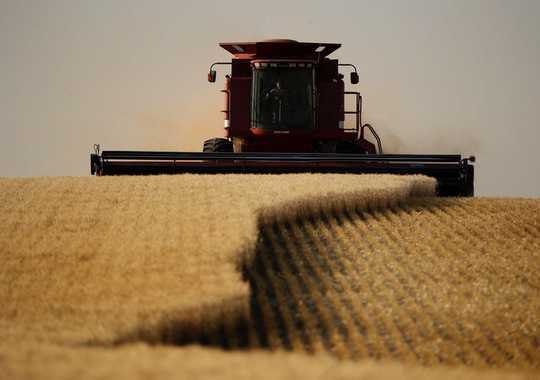 Wheat is harvested in a Kansas field in June 2018. THE CANADIAN PRESS/AP/Charlie Riedel
Wheat is harvested in a Kansas field in June 2018. THE CANADIAN PRESS/AP/Charlie Riedel
Today, conventional wisdom is that the average city in North America has a three-day supply of fresh food (dried, canned and other preserved food supplies will last a bit longer). This, according to some, means that we are all only ever “nine meals from anarchy.” Luckily, North American grocery stores have sophisticated supply chains so no one is seriously suggesting that the panicked purchasing of the last few days that has emptied shelves will persist. Nevertheless, the systems we depend upon are, in many ways, fragile and inherently vulnerable.
In all likelihood, COVID-19 will pass and most of us will only suffer economic setbacks from lost wages and disruptions linked with cancelled classes, travel and meetings. But in the aftermath, it’s important to ask whether we — as a society — will treat this as a moment to learn a bit about the fragility of the modern world.
Will we work collectively to put resilience alongside efficiency as a primary driver for the systems we depend upon each and every day to feed ourselves?![]()
About The Author
Evan Fraser, Professor, Director of the Arrell Food Institute and Tier 1 Canada Research Chair in Global Food Security, University of Guelph
This article is republished from The Conversation under a Creative Commons license. Read the original article.
Recommended books:
Capital in the Twenty-First Century
by Thomas Piketty. (Translated by Arthur Goldhammer)
 In Capital in the Twenty-First Century, Thomas Piketty analyzes a unique collection of data from twenty countries, ranging as far back as the eighteenth century, to uncover key economic and social patterns. But economic trends are not acts of God. Political action has curbed dangerous inequalities in the past, says Thomas Piketty, and may do so again. A work of extraordinary ambition, originality, and rigor, Capital in the Twenty-First Century reorients our understanding of economic history and confronts us with sobering lessons for today. His findings will transform debate and set the agenda for the next generation of thought about wealth and inequality.
In Capital in the Twenty-First Century, Thomas Piketty analyzes a unique collection of data from twenty countries, ranging as far back as the eighteenth century, to uncover key economic and social patterns. But economic trends are not acts of God. Political action has curbed dangerous inequalities in the past, says Thomas Piketty, and may do so again. A work of extraordinary ambition, originality, and rigor, Capital in the Twenty-First Century reorients our understanding of economic history and confronts us with sobering lessons for today. His findings will transform debate and set the agenda for the next generation of thought about wealth and inequality.
Click here for more info and/or to order this book on Amazon.
Nature's Fortune: How Business and Society Thrive by Investing in Nature
by Mark R. Tercek and Jonathan S. Adams.
 What is nature worth? The answer to this question—which traditionally has been framed in environmental terms—is revolutionizing the way we do business. In Nature’s Fortune, Mark Tercek, CEO of The Nature Conservancy and former investment banker, and science writer Jonathan Adams argue that nature is not only the foundation of human well-being, but also the smartest commercial investment any business or government can make. The forests, floodplains, and oyster reefs often seen simply as raw materials or as obstacles to be cleared in the name of progress are, in fact as important to our future prosperity as technology or law or business innovation. Nature’s Fortune offers an essential guide to the world’s economic—and environmental—well-being.
What is nature worth? The answer to this question—which traditionally has been framed in environmental terms—is revolutionizing the way we do business. In Nature’s Fortune, Mark Tercek, CEO of The Nature Conservancy and former investment banker, and science writer Jonathan Adams argue that nature is not only the foundation of human well-being, but also the smartest commercial investment any business or government can make. The forests, floodplains, and oyster reefs often seen simply as raw materials or as obstacles to be cleared in the name of progress are, in fact as important to our future prosperity as technology or law or business innovation. Nature’s Fortune offers an essential guide to the world’s economic—and environmental—well-being.
Click here for more info and/or to order this book on Amazon.
Beyond Outrage: What has gone wrong with our economy and our democracy, and how to fix it -- by Robert B. Reich
 In this timely book, Robert B. Reich argues that nothing good happens in Washington unless citizens are energized and organized to make sure Washington acts in the public good. The first step is to see the big picture. Beyond Outrage connects the dots, showing why the increasing share of income and wealth going to the top has hobbled jobs and growth for everyone else, undermining our democracy; caused Americans to become increasingly cynical about public life; and turned many Americans against one another. He also explains why the proposals of the “regressive right” are dead wrong and provides a clear roadmap of what must be done instead. Here’s a plan for action for everyone who cares about the future of America.
In this timely book, Robert B. Reich argues that nothing good happens in Washington unless citizens are energized and organized to make sure Washington acts in the public good. The first step is to see the big picture. Beyond Outrage connects the dots, showing why the increasing share of income and wealth going to the top has hobbled jobs and growth for everyone else, undermining our democracy; caused Americans to become increasingly cynical about public life; and turned many Americans against one another. He also explains why the proposals of the “regressive right” are dead wrong and provides a clear roadmap of what must be done instead. Here’s a plan for action for everyone who cares about the future of America.
Click here for more info or to order this book on Amazon.
This Changes Everything: Occupy Wall Street and the 99% Movement
by Sarah van Gelder and staff of YES! Magazine.
 This Changes Everything shows how the Occupy movement is shifting the way people view themselves and the world, the kind of society they believe is possible, and their own involvement in creating a society that works for the 99% rather than just the 1%. Attempts to pigeonhole this decentralized, fast-evolving movement have led to confusion and misperception. In this volume, the editors of YES! Magazine bring together voices from inside and outside the protests to convey the issues, possibilities, and personalities associated with the Occupy Wall Street movement. This book features contributions from Naomi Klein, David Korten, Rebecca Solnit, Ralph Nader, and others, as well as Occupy activists who were there from the beginning.
This Changes Everything shows how the Occupy movement is shifting the way people view themselves and the world, the kind of society they believe is possible, and their own involvement in creating a society that works for the 99% rather than just the 1%. Attempts to pigeonhole this decentralized, fast-evolving movement have led to confusion and misperception. In this volume, the editors of YES! Magazine bring together voices from inside and outside the protests to convey the issues, possibilities, and personalities associated with the Occupy Wall Street movement. This book features contributions from Naomi Klein, David Korten, Rebecca Solnit, Ralph Nader, and others, as well as Occupy activists who were there from the beginning.
Click here for more info and/or to order this book on Amazon.

















